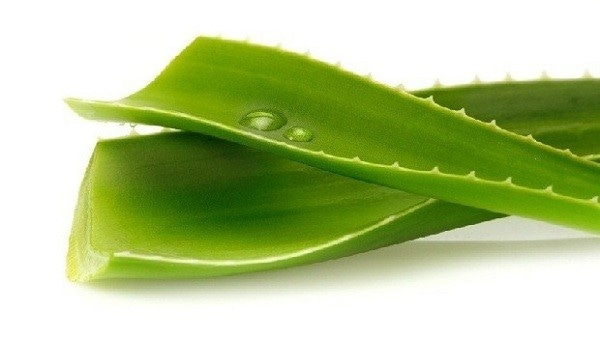Taking a closer look at aloe vera
Aloe vera, used for centuries all around the world for its healing properties, is increasingly being studied using modern scientific methods.
November 2, 2018

Aloe vera has been a mainstay in humankind’s collective medicine cabinet for thousands of years. The ancient Egyptians viewed it as a sacred plant renowned for its beneficial effects on skin and complexion. Records show that both Alexander the Great and Christopher Columbus used the plant’s juices to help heal the wounds of their soldiers. In the past, viewed as a cure-all, it’s doubtful people understood the chemical processes behind aloe vera’s benefits. The World Health Organization (WHO) stated 80 percent of the world population uses medicinal plants for the treatment of diseases. Aloe vera remains a common ingredient for its beneficial properties.
One area researchers have focused on is the application of the plant for digestive health. In a 2017 study published in the Journal of Agricultural and Food Chemistry, researchers examined the nutraceutical properties of aloe vera. The properties “were attributed to a glucomannan known as acemannan.”1 The study found that fructans from the plant induced bacterial growth better than inulin (commercial fructooligosaccharide). The study concluded aloe vera has shown evidence of prebiotic potential. Prebiotics are food ingredients that help induce the activity of beneficial microorganisms. Additionally, the study found aloe treated gastrointestinal (GI) distress by increasing pepsin production and mucus secretion and decreasing in stomach acid production.
A 2015 study through the Royal Society of Chemistry also concluded that incorporating aloe vera into food products can play a beneficial role in prebiotic health.2 Overall, the plant has been shown to exhibit gastric anti-secretory activity and could protect the gastric mucosa at lower concentration against injurious agents.3
The gels of aloe vera contain immunomodulatory components, including aloctin A and acemannan. A separate study looked to examine the effects of the plant on immune health.4 The results showed aloe vera gel increased ovalbumin-specific cytotoxic T lymphocyte generation in those with diabetes. A T lymphocyte kills damaged or infected cells. Similarly, the study noted the inner gel component of aloe vera suppressed bacterial-induced pro-inflammatory cytokines from human immune cells.4
Metabolic syndrome is a collection of conditions that increase the risk of heart disease, stroke and diabetes. Metabolic syndrome affects one in three U.S. adults. A 2012 double-blind study examined the effects of aloe vera supplementation in subjects with prediabetes/metabolic syndrome.5 The results showed standardized aloe vera preparations offered an attractive strategy to revert the impaired fasting glucose and impaired glucose tolerance observed in conditions of prediabetes/metabolic syndrome.5
Scott Meadows, research and development, Concentrated Aloe Corp., pointed to an important heart health study. “A clinical study of 5,000 patients treated with aloe vera gel observed marked reduction in total serum cholesterol, serum triglycerides, fasting and post-prandial blood sugar level in diabetic patients, total lipids and also an increase in high-density lipoprotein (HDL), all which result in a reduction of heart disease.”6
The International Aloe Science Council (IASC) is a nonprofit trade organization for the aloe vera industry. Its website states, “The IASC provides the forum for establishing and sharing best practices in the aloe business community, as well as creating common standards for the aloe vera marketplace.” An IASC certification underscores an aloe product’s quality and safety.
Even with the popularity and clinically proven benefits of aloe vera, some consumers have shown a reluctance to embrace the plant. “Consumers may have heard or read that a specific form of whole leaf aloe vera was found to be carcinogenic in rats by the National Toxicology Program (NTP),”7 said Jane Wilson, executive director, IASC. “The form of whole leaf aloe vera that was used in the NTP research study was not processed to remove potentially toxic constituents and is not the form of aloe vera being classified by the International Agency for Research on Carcinogens (IARC).”
The conclusions of the NTP research study resulted in aloe vera being classified by the IARC as a possible human carcinogen. Another source of confusion surrounding the toxicity of aloe vera can be traced to California’s Prop 65. The proposition added “Aloe vera, non-decolorized whole leaf extract” on its list of chemicals known to the state to cause cancer because of the IARC classification. “The selection of this test material was made in the context of the objectives of the NTP research project and was not made with consideration as to what forms of aloe vera are used in consumer products,” Wilson said.
The IASC has established two methods of processing aloe vera leaf for commercially available products. Its website states:
“Aloe vera juice is obtained by grinding or macerating the entire aloe vera leaf followed by purification to remove the phenolic compounds found in the latex. This purification step is usually accomplished via activated carbon filtration in process known as decolorization.”
“Aloe vera juice is obtained by stripping away the outer leaf rind, rinsing or washing away the latex and processing the remaining inner leaf material. Decolorization is also sometimes employed with this method.”
Non-decolorized aloe vera leaf juice made from the entire leaf is on the order of 10,000 to 20,000 parts per million (ppm). The IASC has established a standard for its certification program of no more than 10 ppm for aloe vera juice ingredients for use in products intended for oral consumption, whereas the European Council Directive 88.388 has established a standard of no more than 0.1 ppm in flavorings for beverages.
Rest assured consumers aren’t too concerned with how safe aloe vera is. “IASC has not seen any evidence that a wide-spread concern about the toxicity of aloe vera exists among consumers,” Wilson said. “Many consumers have had the experience of growing up with aloe vera plants in their households and have used aloe vera gel directly for minor scrapes and burns all their lives. Aloe vera has such a long history of use for both topical and ingestion purposes, with very few documented incidences of any safety concerns.
“For any consumers who may have a concern about the potential toxicity of aloe vera, it is important to understand that different processed forms of aloe vera are available in consumer products,” Wilson continued. “Carefully reading the product label will inform consumers as to whether the product is made from the whole leaf of aloe vera, or just from the inner leaf gel. One easy way for consumers to identify aloe vera products that do not contain potentially harmful levels of aloin is to purchase products that have been certified by the IASC. This certification assures that aloin levels in aloe vera products do not exceed 10 ppm.”
Connor Lovejoy is an assistant editor at Informa.
References
1. Quezada, M. P. et al. “Acemannan and Fructans from Aloe vera (Aloe barbadensis Miller) Plants as Novel Prebiotics.” J Agric Food Chem. 20017;65(46):10029-10039. doi:10.1021/acs.jafc.7b04100
2. Sadiq, Y., Abdulkarim, A., Mshelia, D. “The effect of Aloe vera A. Berger (Liliaceae) on gastric acid secretion and acute gastric mucosal injury in rats.” Journal of Ethno-Pharmacology. 2004;93:33-37.
3. Gullon, B. et al. “In vitro assessment of the prebiotic potential of Aloe vera mucilage and its impact on the human microbiota.” Royal Society of Chemistry. 2015;6.525. doi:10.1039/c4fo00857j
4. Sun-A, I. et al. “In vivo Evidence of the Immunomodulatory Activity of Orally Administered Aloe vera Gel.” Arch of Pharm Res. 2010;33(3):451-456. doi:10.1007/s12272-010-0315-1
5. Devaraj, S. et al. (2012). “Effects of Aloe vera Supplementation in Subjects with Prediabetes/Metabolic Syndrome.” Metab Syndr Relat Disord. doi:10.1089/met.2012.0066
6. Agarwal, O.P. “Prevention of Atheromatous Heart Disease.” 31st Annual Meeting, American College of Angiology. 1985;36(N.8).
7. National Toxicology Program. Toxicology and Carcinogenesis Studies of a Nondecolorized Whole Leaf Extract of Aloe barbadensis Miller (Aloe vera) in F344/N Rats and B6C3F1 Mice
About the Author(s)
You May Also Like






.png?width=800&auto=webp&quality=80&disable=upscale)